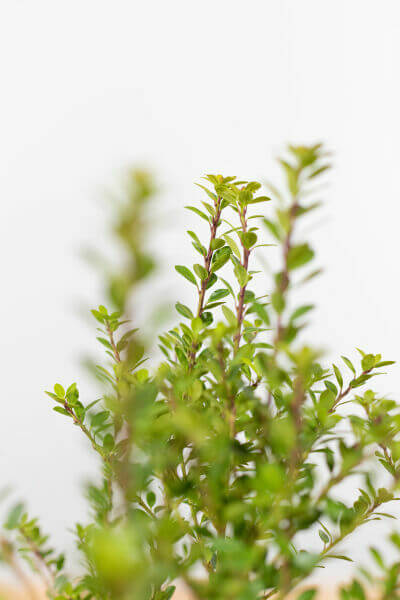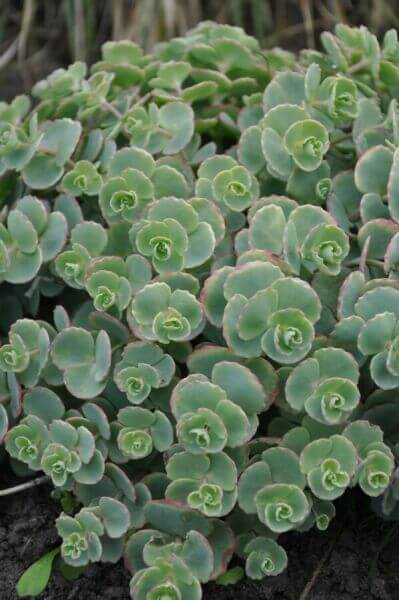Hedge Plants For Ornamental Hedges
Hedge Plants For Ornamental Hedges
Blog Article
Hedge Plants For Foliage Interest
Improve your garden's allure with lush hedge ranges such as Yew (Taxus), Thuja, Laurel, Photinia, and Bamboo, commemorated for their structural integrity and environmental advantages.
Yew and Thuja provide evergreen protection and winter season resilience, while Laurel provides fast growth and broad, aromatic leaves.
Photinia adds seasonal appeal with its vibrant red foliage, and Bamboo lends a low-maintenance, tranquil ambiance.
These hedges improve air quality, decrease sound, and create tranquil, personal spaces.
Appropriate planting, spacing, and upkeep make sure vigorous growth and eco-friendly harmony.
Explore how these rich ranges can raise your garden's beauty and wellness.
Secret Takeaways
Change Your Garden With Lush Hedge Varieties
- Select Yew for its dense, evergreen growth and unequaled durability.
- Opt for Laurel for its fast growth and broad leaves, ensuring quick privacy.
- Select Photinia for its dynamic seasonal foliage, which turns a striking dark red.
- Utilize Bamboo for a low-maintenance, winter-hardy hedge with aesthetic appeal.
- Space plants 2-3 per meter and prune frequently for optimum development and health.
Popular Hedge Plants
When changing a garden with lush hedge varieties, it's important to think about popular hedge plants such as Yew, Thuja, Laurel, and Photinia due to their unique qualities and advantages.
Yew (Taxus) is extremely respected for its durability and thick, green growth, making it a prime option for sustaining landscapes.
Thuja is kept in mind for its evergreen foliage and robust winter season durability.
Photinia adds seasonal vibrancy with red leaves that darken in time, producing dynamic visual appeal.
Laurel provides fast growth and aromatic, broad leaves, perfect for fast personal privacy.
Furthermore, Bamboo is an outstanding choice for ambiance, offering a low-maintenance, winter-hardy alternative that boosts the garden's visual with its stylish, swaying walking canes.
These choices deal with a range of horticultural requirements and preferences.
Benefits of Garden Hedges
Garden hedges use a multitude of advantages, making them an important addition to any landscape. These natural barriers are affordable to implement and supply considerable wind security, enhancing air blood circulation and contributing to sound decrease. The dense foliage of hedges like Thuja and Beech makes sure personal privacy by obstructing presence, producing a serene and remote environment.
Hedges also play a crucial function in microclimate regulation, offering a stable environment that promotes plant growth and decreases temperature variations. Their elaborate leaf structures filter toxins, improving air quality and adding to a healthier garden community.
Moreover, hedges stand out in noise reduction, soaking up and deflecting sound waves to lower ambient sound levels. This double functionality of supplying both visual and acoustic personal privacy enhances the general serenity and aesthetic appeal of any garden.
Planting and Maintenance Tips
For an effective hedge, meticulous preparation of the planting area is vital. Ensure the soil has correct pH and drain to support strong root advancement.
Space the plants properly for the picked species. Water the hedge often throughout its initial development stage, adjusting as required with seasonal changes.
Carry out a methodical pest control and disease prevention method, using chemical or organic treatments when essential. Routinely examine for aphids, termites, and fungal infections.
Apply mulch to maintain moisture and suppress weeds. Seasonal pruning promotes dense growth and air flow, vital for plant health.
Following these standards will assist you cultivate a lively, well-maintained hedge that enhances the charm of your garden.
Spacing and Trimming Guidelines
Spacing and Trimming Guidelines
Appropriate spacing and trimming are important for cultivating healthy, aesthetically appealing hedges. Sufficient spacing guarantees each plant receives adequate nutrients, light, and airflow.
Follow these guidelines for ideal hedge maintenance:
- Spacing: Position hedge plants 2-3 plants per meter to encourage robust growth.
- Pruning Strategies: Routine pruning is necessary for keeping wanted hedge height and shape. Cut new growth in summer and cut down older wood throughout winter season.
- Seasonal Care: Adjust trimming schedules and methods according to seasonal requirements to make sure plant health.
- Hedge Height: Frequently screen and trim to maintain the wanted hedge height and accomplish uniform aesthetic appeals.
Adhering to these actions will guarantee your hedge prospers, boosting both the appeal and functionality of your garden.
Picking the Right Hedge
Selecting the Right Hedge
Selecting the appropriate hedge includes examining aspects such as fully grown height, foliage density, and environmental strength. Effective hedge plant selection needs comprehending each species' development qualities and site-specific adaptability.
For instance, Yew (Taxus) offers exceptional longevity and dense development, while Thuja is notable for its winter season resilience. In addition, considering upkeep requirements is crucial; fast-growing species like Laurel or Privet demand regular trimming, whereas low-maintenance alternatives like Bamboo or Ivy may be more effective for those looking for minimal upkeep.
Ecological elements such as soil type, light accessibility, and wetness conditions ought to likewise guide the choice process. This cautious technique guarantees the picked hedges will flourish, supplying both practical and visual advantages to the garden landscape.
Delivery and Planting Advice
To ensure your hedge plants grow, they should be delivered by specialized carriers and planted quickly upon arrival.
Follow these vital steps for successful planting:
- Soil Preparation: Enrich the soil with raw material to enhance drain and nutrient content.
- Planting Depth: Produce a trench two times the width and equivalent to the depth of the root ball.
- Watering Techniques: Water thoroughly after planting, keeping the soil regularly wet but not saturated.
- Mulching: Apply a layer of mulch to keep wetness and reduce weeds.
Consumer Support and Service
Given the important function of prompt help in horticultural pursuits, our customer support team is offered six days a week through telephone, email, and social networks to use skilled advice and swiftly address any concerns. Their dedication to quick response times ensures customer satisfaction by dealing with inquiries associated with plant health, ideal planting techniques, and maintenance schedules.

Within 24 hours
This detailed support group, reinforced by a stellar 9.3/ 10 client score, highlights our dedication to boosting the gardening experience for every single customer.
Regularly Asked Concerns
How Long Does It Consider Hedge Plants to Develop?
Hedge plants generally require one to 3 years to end up being totally developed, with the specific period differing by types and growing conditions.
Efficient care during this crucial period is important for robust growth. Consistent watering, alert weed control, and proper fertilizer application are essential in promoting strong root advancement.
For example, fast-growing species like Laurel may develop faster, while slower-growing ranges such as Yew may take longer. Persistent maintenance accelerates the facility procedure, resulting in dense and healthy hedges.
What Are the Finest Hedge Plants for Privacy?
The concern of the very best hedge plants for personal privacy includes examining evergreen and deciduous alternatives.
Evergreen hedges like Thuja, Laurel, and Cypress supply year-round coverage, ensuring constant personal privacy.
In contrast, deciduous hedges such as Beech offer seasonal personal privacy, shedding leaves in chillier months.
Key upkeep ideas for personal privacy hedges consist of routine trimming, fertilizing in spring, and proper spacing-- normally 2 to 3 plants per meter.
Furthermore, consistent watering and thorough weed removal are crucial for promoting healthy, thick growth.
Can Hedge Plants Attract Wildlife to My Garden?
Yes, hedge plants can bring in wildlife to your garden by providing necessary benefits like shelter, food, and nesting sites, thus enhancing regional biodiversity. Yew, holly, and laurel are exceptional for attracting birds, while ivy supports a range of insects.
However, it is very important to note that there are some downsides, such as increased maintenance to handle bugs and regular maintenance. Thoroughly choosing and keeping hedge varieties can assist stabilize these benefits and downsides, eventually cultivating a dynamic and sustainable ecosystem in your garden.
Are There Any Blooming Hedge Plants Available?
Yes, there are flowering hedge plants available that can enhance the charm of your garden.
For instance, Elaeagnus, likewise called Olive Willow, get more info produces fragrant white flowers in the fall, adding a touch of sophistication.
Photinia, another popular choice, showcases lively red leaves that grow into a rich green, producing a vibrant visual result throughout the seasons.
To ensure these plants grow, it's important to practice correct pruning strategies and seasonal maintenance, such as trimming new growth in the summertime and cutting down in the winter season.
These procedures will assist maintain the health and aesthetic appeal of your flowering hedges.
How Do I Prevent Pests in My Hedge Plants?
To prevent pests in hedge plants, employ natural pest control methods and maintain appropriate hedge care. Introduce useful bugs like ladybugs, which victimize damaging bugs, to produce a well balanced community.
Routinely check your hedges for indications of invasion and immediately get rid of any afflicted parts to prevent the spread. Ensure the health of your hedges by applying balanced fertilizers and supplying appropriate water.
Make use of mulching to keep soil moisture and proper spacing to reduce plant tension and promote robust development. These practices collectively help in minimizing pest concerns and preserving a healthy hedge.
Conclusion
In essence, selecting the right hedge ranges such as Yew, Thuja, and Laurel can change any garden into a peaceful haven. These plants supply year-round plant, improve aesthetic appeal, and deal practical advantages like sound reduction and wind defense.
Appropriate planting techniques, precise spacing, constant watering, and seasonal trimming are vital for optimum growth.
Trustworthy delivery services and expert client support make sure a seamless experience from purchase to planting, making it easier than ever to elevate your outside space.
Garden hedges use a plethora of benefits, making them an important addition to any landscape. These natural barriers are economical to implement and offer significant wind security, enhancing air flow and contributing to noise reduction. The thick foliage of hedges like Thuja and Beech ensures personal privacy by obstructing exposure, developing a secluded and peaceful environment.

Pruning Methods: Regular pruning is necessary for keeping preferred hedge height and shape. Trim brand-new growth in summer season and cut back older wood throughout winter.
Report this page